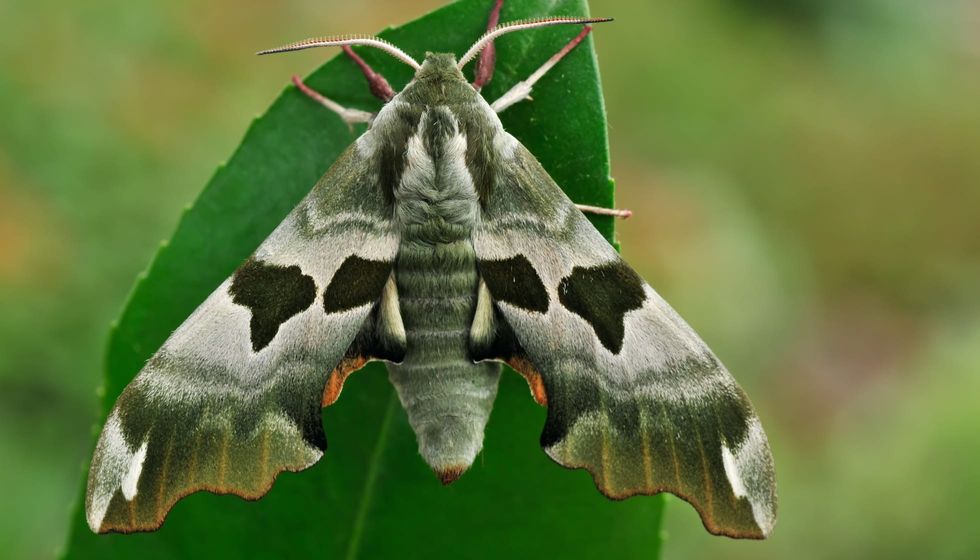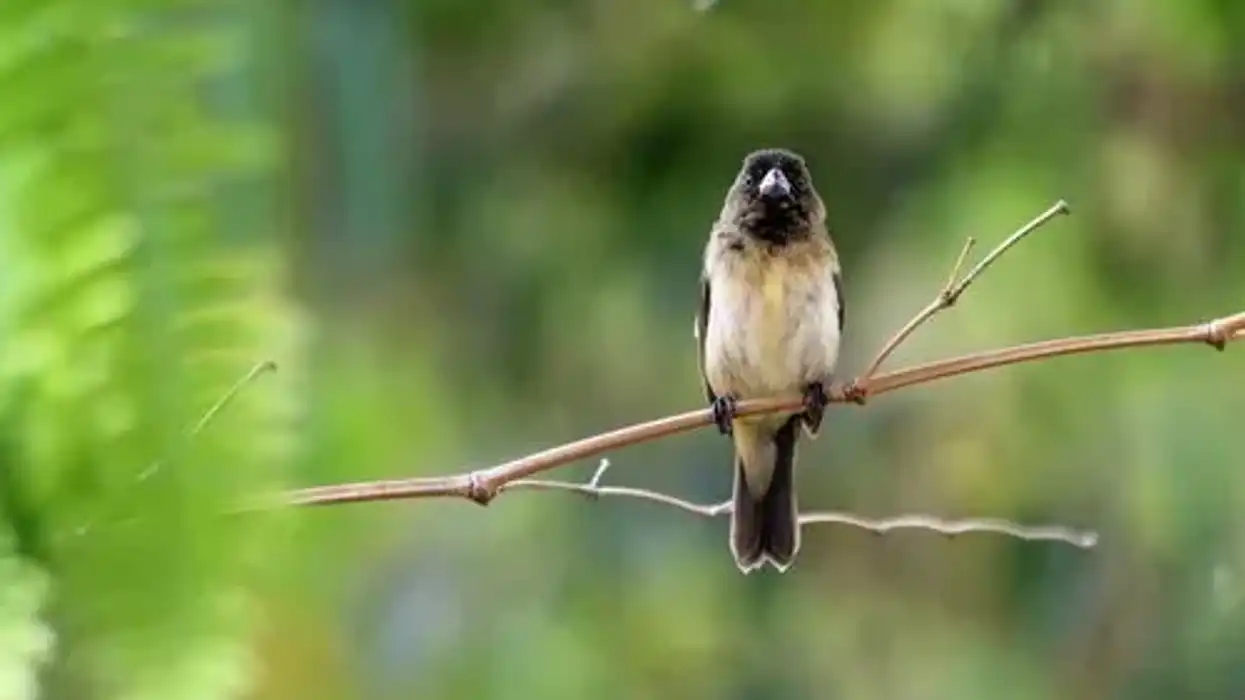The Mimas tiliae belongs to the family Sphingidae which are also known as sphinx moths. The name of the family was termed by Pierre Andre Latreille in 1802.
Carl Linnaeus initially described the Mimas tiliae in his 10th edition of Systema Naturae, published in 1758. The Mimas tiliae, lime hawk-moth, is one of the most popular hawk moths found in the southern parts of England and Europe. The lime hawk-moth caterpillar is typically green with yellow stripes, a blue horn at the back, and brown-colored forewings.
Usually, they do not come in human contact. This moth is mostly encountered when it is ready to pupate and changes its color to purplish brown.
Want to know more about the Mimas tiliae, see its photos, and read more interesting facts about it? Then scroll ahead, and do not forget to check out other amazing animals and insects like the pill bug and ghost ant.
Lime Hawk Moth Interesting Facts
What type of animal is a lime hawk moth?
The lime hawk moth is a type of caterpillar. The scientific name of this hawk-moth is Mimas tiliae and it belongs to the family Sphingidae.
What class of animal does a lime hawk moth belong to?
The moth lime hawk belongs to the class Insecta. There are about 850 species of hawk moth present worldwide.
How many lime hawk moths are there in the world?
The exact population of the lime hawk-moth is unknown in the world due to lack of research, however, it is found frequently in the southern half of England and Europe.
Where does a lime hawk moth live?
The species of lime hawk moth lives in the woods, found frequently in England and Wales. The adult of this moth can be seen resting on walls, tree trunks, and lime trees.
What is a lime hawk moth's habitat?
The Mimas tiliae are found all over the Palearctic region and the Near East and in eastern Canada. They are found in parks, gardens, and woodlands. They feed on leaves of deciduous trees like lime, silver birch, and elm at night, but the adults do not feed at all. Adults hibernate during the day to avoid attracting predators' attention.
Who do lime hawk moths live with?
Mimas tiliae are solitary creatures except when they are breeding. Only when the male mates with the female is he involved in the reproductive system. They do not live in flocks or migrate in groups, and they do not form pairs.
How long does a lime hawk moth live?
The lime hawk moth life cycle is very short and the adult moth lime hawk can live for up to five weeks. Usually, this moth is seen in the summer from about May to June.
How do they reproduce?
After spotting a possible mate, the male of the Mimas tiliae chases the female until she falls on the ground. The male may flap his wings, move his antennae, and may dose the female with pheromone.
After that, the male moth mounts the female to mate. Eggs are laid in small batches and hatch within 7-10 days depending upon the temperature. After hatching they are seen to be green in color and their color again changes after maturing.
What is their conservation status?
According to the UK biodiversity action plan, the conservation status of the lime hawk-moth is common and this species of hawk moth is not listed on the IUCN red list. They are found throughout the southern half of England and Europe.
Lime Hawk Moth Fun Facts
What do Lime Hawk Moths look like?
They are mostly pinky-buff colored moth withs two big dark green spots halfway down the forewings. The female lime hawk moth has a brown-colored forewing, whilst males have a greener forewing color and the hind wing is buffish brown in color. The lime hawk caterpillar is also variable in color.
They are green with yellow stripes along each side and a red-brown horn at the tail end when they initially hatch. They mature into a pinkish-gray or bluish-gray with a dazzling blue horn as they grow older.
When ready to pupate, the blue horn lime hawk moth caterpillar with yellow stripes changes its color to purplish-gray and wanders for places to pupate in. This is the time when they are seen crawling down lime trunks and or on pavements.
How cute are they?
These moths are some of the cutest you'll ever see! The lime hawk moth caterpillar horn has a glistening blue color which is enough to dazzle anyone.
How do they communicate?
The Mimas tiliae is entirely non-verbal, which means most of the communication occurs through chemical cues like the male produces chemicals called a pheromone to entice females.
How big is a lime hawk moth?
The Mimas tiliae is a medium-sized moth with a wingspan range of about 2.2-2.8 in (55-70 mm) and the size of the green-colored lime hawk moth caterpillar is about 2.6 in (65 mm). It is about half the size of a five-spotted hawk moth with a wingspan of 5.1 in (13o mm).
How fast can lime hawk moths move?
The lime hawk moth can reach a peak speed of 12 mph (19.3 kph), which is faster than many birds.
How much does a lime hawk moth weigh?
The green-colored lime hawk moth caterpillar weighs around 0.0035-0.24oz (0.1-7 g).
What are the male and female names of the species?
There are no particular names for the male and female of the species Mimas tiliae.
What would you call a baby lime hawk moth?
A baby lime hawk moth doesn't have any specific name. However, after hatching the egg, a green color larva emerges out which is called a caterpillar.
What do they eat?
The green-colored lime hawk moth caterpillars feed only at night on the leaves of lime, silver birch, and elm trees, but the adults don't feed at all and rest on walls, tree trunks, and lime foliage.
Are they harmful?
The lime hawk moth caterpillars are entirely harmless and are too small to even attempt to bite humans and are not at all poisonous. However, humans should be careful not to touch them as this caterpillar can cause some allergic reactions or irritation when they make contact with your skin. As such, they are not beneficial for people.
Would they make a good pet?
No, the moth lime hawk would not make a very good pet as they have a very short life span and are not really suited for captivity. Therefore, they are mostly considered pests and are not of use to humans as such.
Did you know...
Lime hawk-moth caterpillars are easily distinguished from other caterpillars by their lack of hair and a prominent curved blue-colored horn at the tail end.
Do lime hawk moths bite?
While it's true that brightly colored butterflies and moths often indicate high toxicity, the Mimas tiliae is completely innocuous and they do not sting or bite.
Why do lime hawk moths die?
The moth lime hawk is usually eaten by predators like birds and bats at all stages of their life cycle because of which the adult hibernates during the day to avoid the attention of the predator. Also, when the Mimas tiliae is ready to pupate the caterpillar descends to the ground, where it is crushed by humans.
Here at Kidadl, we have carefully created lots of interesting family-friendly animal facts for everyone to discover! Learn more about some other insects from our wheel bug facts and stick bug facts pages.
You can even occupy yourself at home by coloring in one of our free printable Lime hawk moth coloring pages.









